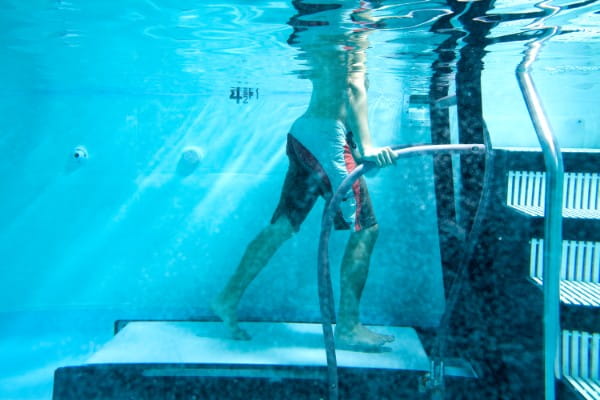What do you think of when someone mentions they’re in a physical therapy program? For many, exercise programs and braces may come to mind. However, PT has come a long way in recent years.
“While many of the older techniques can still be quite valuable for the patient in a physical therapy program,” says William Parker II, PT, DPT, SCS, Director of Outpatient Therapy for Riverside, “there are some interesting new trends that take PT to a whole new level.”
Let’s explore some of these newer advances in physical therapy.
Modern techniques and strategies
These relatively new PT treatments are becoming more and more mainstream. While some have a technology component, they’re built on principles and treatments that have been in place a long time, but now often have a new twist.
- Telemedicine. With the current pandemic keeping most people at home, telehealth visits are being adopted by more and more medical professionals. Using a web-connected device like a smartphone or tablet, the physical therapist is able to show the exercises, then coach the patient through the right way to do them. Although massage and physical manipulation, or hands-on care of the affected areas, aren’t possible in a remote session, teletherapy works -. Telemedicine visits are also useful for physical therapy patients who must be quarantined while recovering from coronavirus and for people who live in remote areas who find it hard to travel to the therapist.
- Dry needling. Muscle spasms and scar tissue can be highly painful and make it hard to move. These problem areas often feel like tight knots beneath the skin. Dry needling uses very thin stainless steel needles inserted into the trigger points within the muscles. (The word “dry” here refers to the fact that the needles do not contain medicine.) This process relaxes the tightness by stimulating the surrounding tissue, providing pain relief and increased range of motion. While the technique sounds like acupuncture, dry needling usually focuses on just the painful areas. It’s useful for sports injuries, soreness after accidents, repetitive strains—many situations in which there is stiffness and soreness in a certain area. Dry needling should only be done by a trained physical therapist.
- Aquatic therapy. A primary advantage of aquatic therapy—where the PT patient exercises in a pool—is that the buoyancy provided by the water takes some of the stress of the patient’s body weight off the joints. This allows strength-building and healing without causing further damage in the way that higher-impact exercises might. It’s often used after knee or hip replacement surgery or back procedures. In addition, the resistance of the water helps build up muscles and joints faster, and the warmth can be soothing for aches and pains. Many people find this form of therapy very relaxing and learn the benefits of aquatic physical therapy for patients with pain. The therapist will often get into the water with the patient to assist with the process and ensure the the patient is doing the movements correctly to get the most benefit.
- Hand therapy. We depend on our hands to do almost everything, so a loss of hand mobility and use results in a significant decrease in quality of life. Whether the problem is related to an injury, an underlying condition like arthritis or diabetes, or is the result of post-surgical stiffness, physical therapists can help restore flexibility and reduce pain in fingers and wrists. The PT will work closely with the physician to develop a plan of care to restore movement and nerve function. Hand therapy employs a broad range of modern techniques, including exercise programs, education about how to protect the joints, pain management strategies, and the use of orthotics and assistive equipment.
- Sports therapy. Sports injuries are common, and they can be serious. Not only can they prevent the athlete from doing the activities they enjoy—they can create chronic problems if not managed properly. Children and teens are often candidates for sports PT, and because they are still growing, it’s important that they receive the care they need to heal properly while learning to prevent future injury. Sports therapy is a specialty within PT that requires an understanding of human movement and the strains that different types of athletic activity put on the body. The athlete must be trained to move in a manner that is both effective and safe. The specialty can also extend to nutritional science and the psychology of performance.
Getting back up to speed
This list does not include all therapies. There are many more modern specialized rehabilitation services that address a broad range of issues, and the profession is constantly evolving.
“An injury or chronic pain can sideline us, but advances in physical therapy help patients heal in a consistent, correct and therapeutic way while teaching them how to prevent further problems,” says Parker.
Riverside Physical Therapy offers a wide range of PT services. Depending on the care you need, a specialized plan will be tailored just for you and your recovery. Call 1-800-675-6368 to find out more about Riverside’s outpatient physical therapy locations and to make an appointment.



